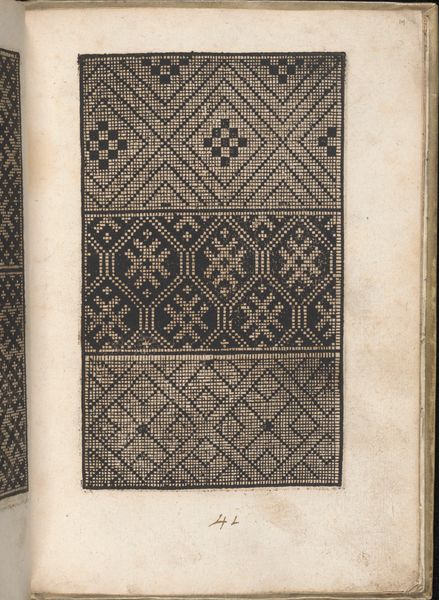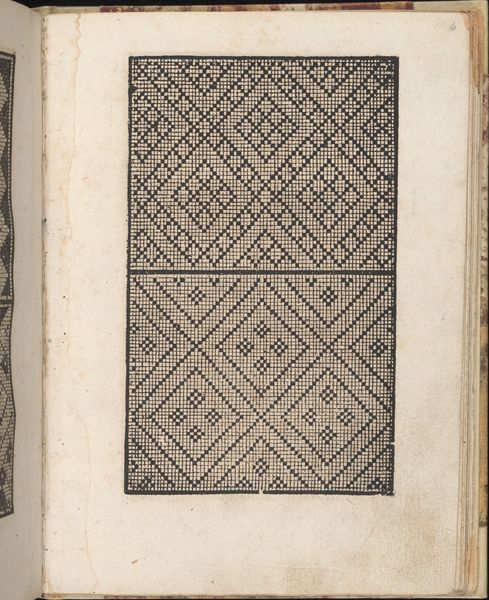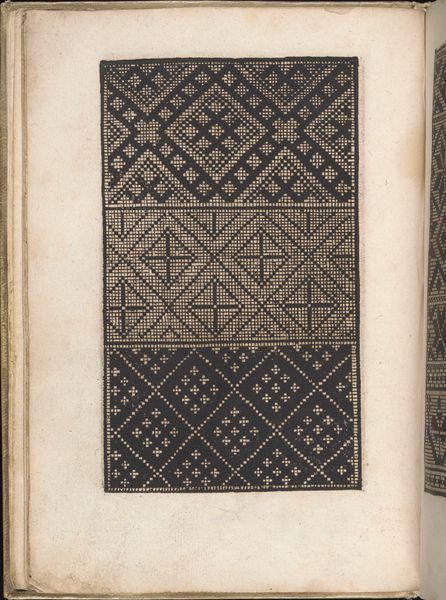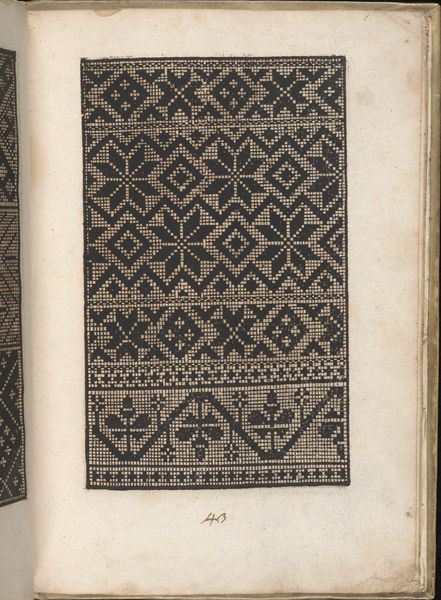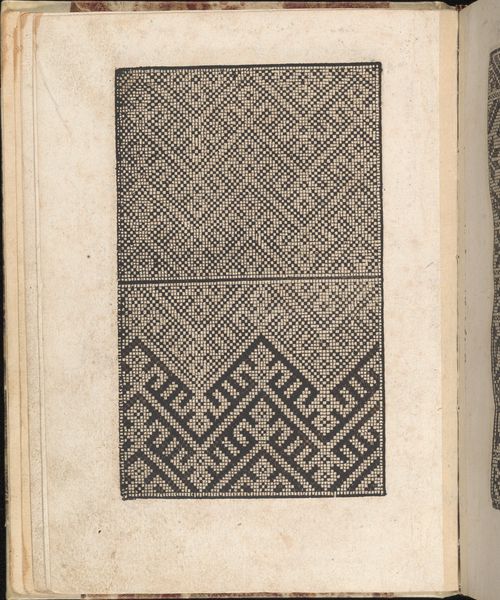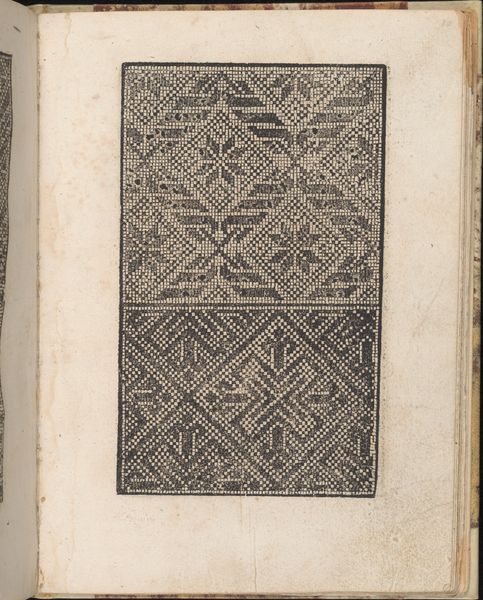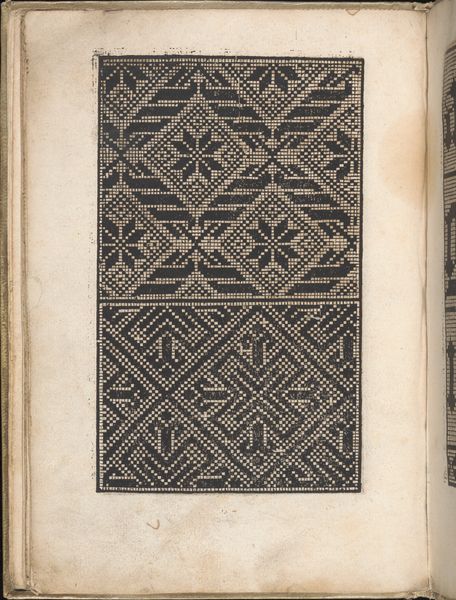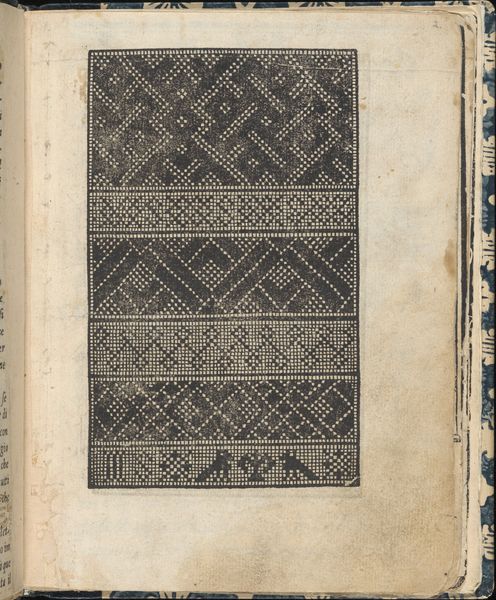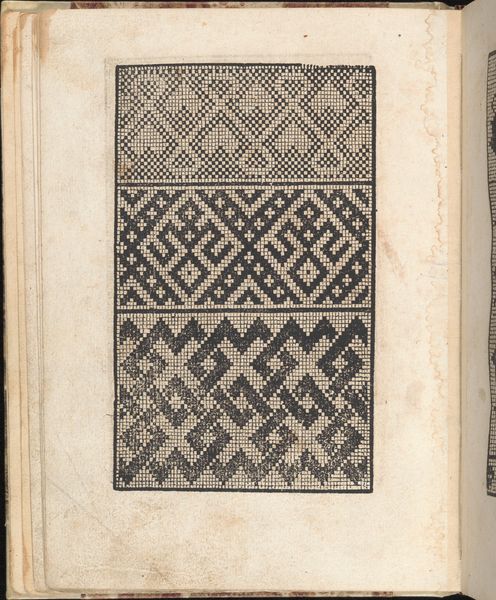
Ein new getruckt model Büchli...Page 16, recto 1529
0:00
0:00
drawing, print, woodcut
#
drawing
#
medieval
# print
#
pattern
#
11_renaissance
#
geometric
#
woodcut
Dimensions: Overall: 7 7/8 x 6 1/8 in. (20 x 15.5 cm)
Copyright: Public Domain
Curator: Let’s turn our attention to a page from "Ein new getruckt model Büchli," created by Johann Schönsperger the Younger in 1529. It’s a woodcut print featuring geometric patterns. Editor: Wow, okay. Immediate impression: mesmerizing! It’s like looking into a black and white vortex of ancient computer code. The precision is incredible for something made so long ago. Curator: Precisely! This book was a pattern book, a vital resource in the Renaissance. These designs were not merely decorative, they were functional blueprints for artisans. Embroidery, weaving… all relied on these model books. Consider the social and economic implications for women at the time who would have deployed these patterns in textiles and needlework. Editor: Ah, so a kind of proto-Pinterest for textile artists? I can imagine these designs popping up everywhere, a sort of meme of the 16th century, riffed on endlessly. I’m really drawn to how contained it all is within the page; the pattern sections stack one on top of the other, contained like chapters of creative expression. Curator: Exactly. And these geometric forms? They speak volumes about the era's worldview. Think of the rediscovery of classical ideals, the mathematical harmony… everything had a place. But these weren’t sterile exercises. They allowed a kind of individualized visual rhetoric depending on their incorporation into daily life. Editor: It's funny, you can really see both that order and those possibilities. The rigid lines contrast with the endless variations within the design itself. I wonder, was there room for improvisation or were artisans expected to follow these patterns exactly? Curator: There certainly was! Remember, these books provided a framework, not a prison. Skilled artisans would adapt, modify, add their unique touches. This piece sits at the intersection of instruction and imagination. The design on this page in particular is not perfectly symmetrical but does a nice job presenting variations on that Renaissance standard. Editor: Makes you wonder about all the stories hidden within these patterns...all the lost sweaters! Looking at this again, I am getting kind of hypnotized… and ready to take up needlepoint. Curator: Absolutely, each repetition tells a story. Each shift holds implications of human invention and social meaning. These historical records allow us to re-think the past and ourselves. Editor: It really does. And from a completely subjective view, what I notice is how incredibly alive these patterns feel, even after centuries. An enduring resonance and a really wonderful bridge across time!
Comments
No comments
Be the first to comment and join the conversation on the ultimate creative platform.
